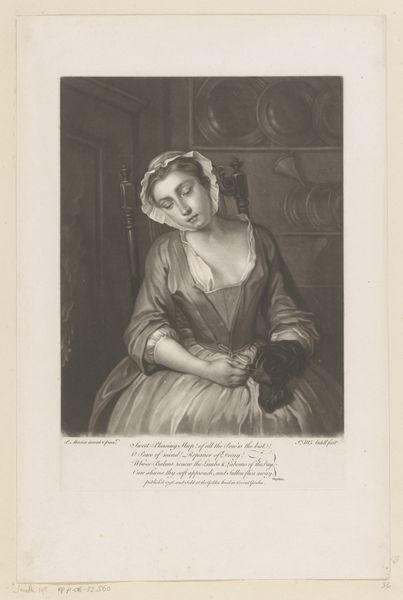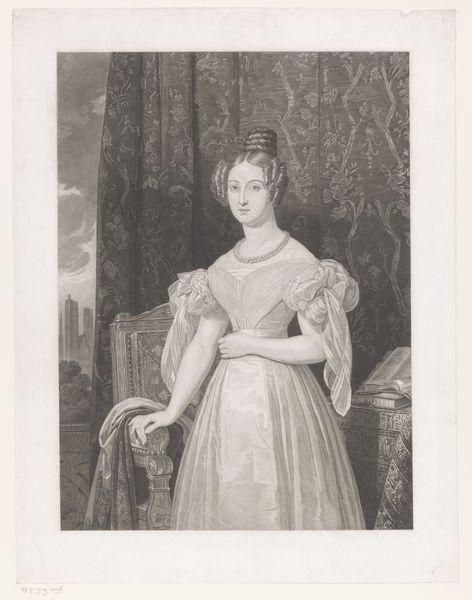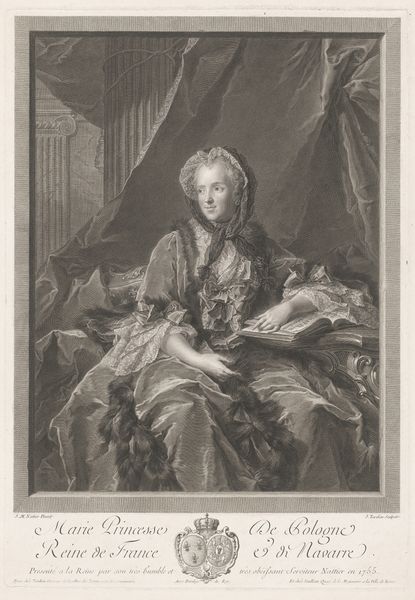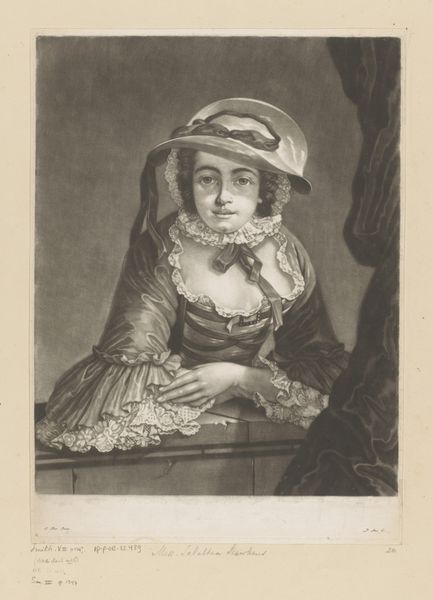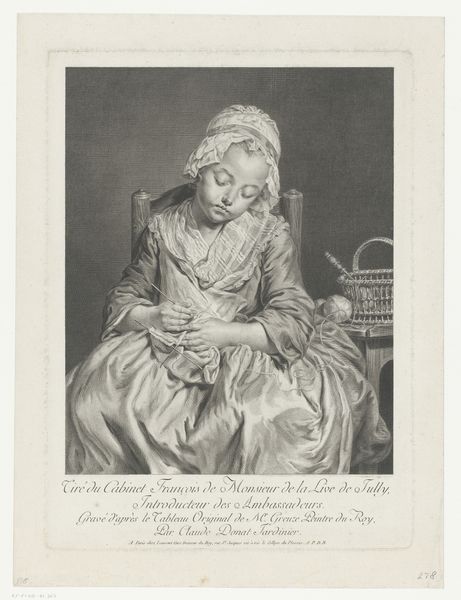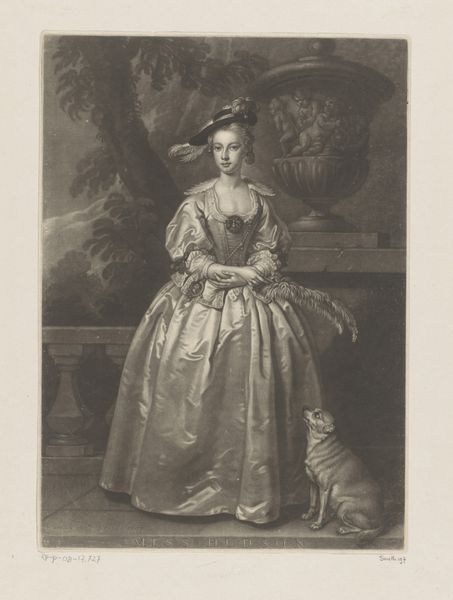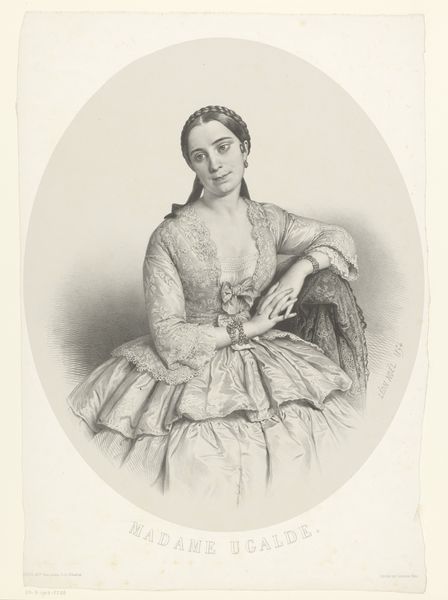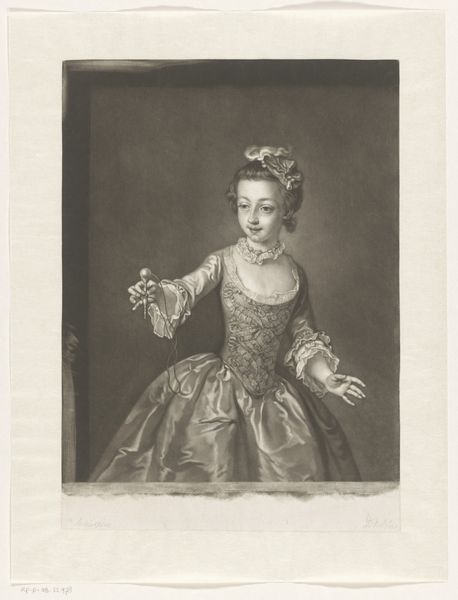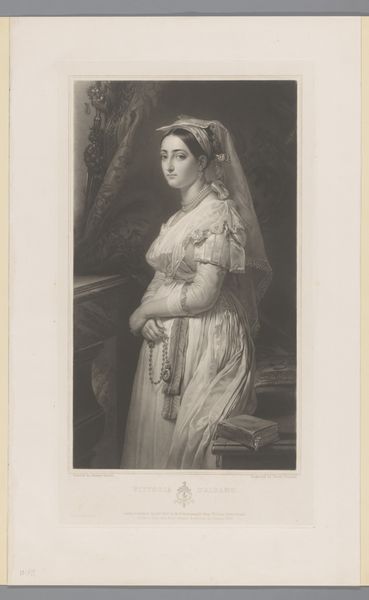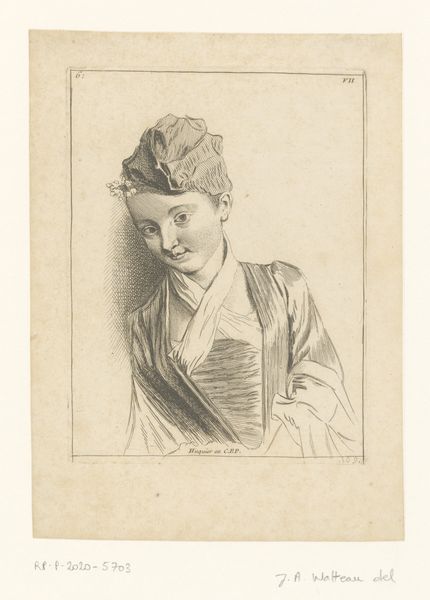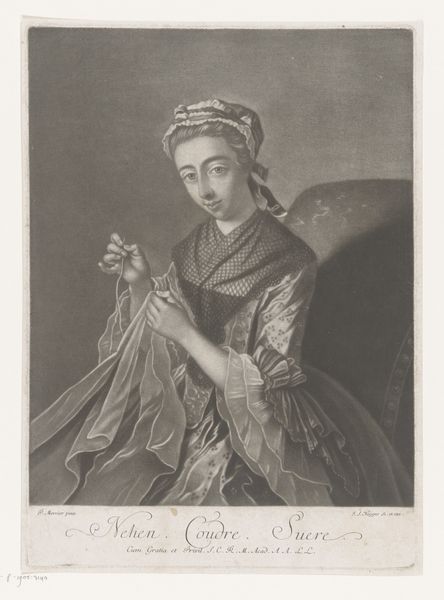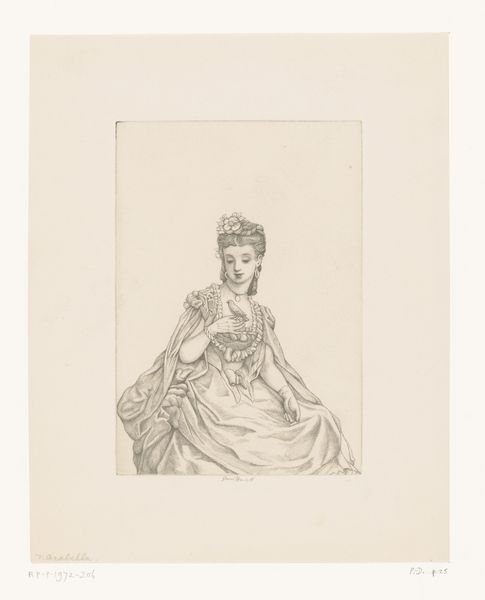
Dimensions: height 346 mm, width 250 mm
Copyright: Rijks Museum: Open Domain
Curator: Immediately, I’m struck by the contrast in tones and how sharply it defines her face, while also giving a soft and calm feeling. It's quite masterful. Editor: Indeed. This is "Vrouw aan het breien", or "Woman Knitting," an engraving by Johann Simon Negges. It's a genre painting, created sometime between 1736 and 1792. Considering it’s a print, what's fascinating to me is how Negges renders the textures and light. It highlights class, domesticity, and gender roles of the era. Curator: The materiality is very interesting. The precision of engraving perfectly mirrors the meticulous labor of knitting itself. Notice the different line weights suggesting light on silk, the texture of the cap, versus the softer shading used on her face. I find that Negges used a variety of engraving techniques to mimic the qualities of drawing. Editor: Precisely! And if we think about knitting historically, it’s labour, yes, but specifically gendered labour. Women were confined to the domestic sphere. So, here she is, passively knitting. This imagery, particularly the romanticization of domesticity, often masked women's lack of autonomy. The question arises of whether she is happily knitting or if knitting is more like a chain confining her in a life devoid of true personal freedom. Curator: It's true that while some might perceive it as confinement, knitting was a productive use of time, turning raw materials into useful goods. This reflects the era’s understanding of women's labor as both nurturing and valuable within a specific context of domestic production. Editor: But it is an oversimplified, maybe romanticized vision. Looking at her face, is it joy that we see, or simply acceptance? We must be aware of these representations and ask about the limitations imposed upon women of this time. It urges us to critically reflect on present-day stereotypes. Curator: By turning our attention to these details—technique, labour, even the printmaking process itself—we are recognizing these often unacknowledged processes that shaped both the artwork and the era it represents. The very act of creating prints, mass produced to be available to a greater population than painting. Editor: I think, to analyze “Vrouw aan het breien”, this reminds us of art’s capability to both reflect and subtly perpetuate the intricacies of gender, identity, and politics that span generations. It allows for dialogue across disciplines. Curator: It encourages a closer consideration not only of art, but also how labor practices impact our appreciation and perspective on seemingly simple works.
Comments
No comments
Be the first to comment and join the conversation on the ultimate creative platform.


